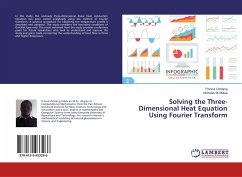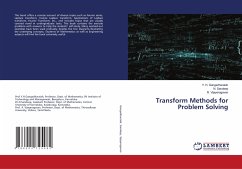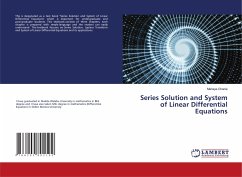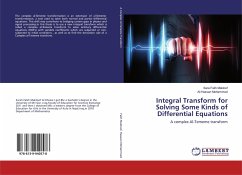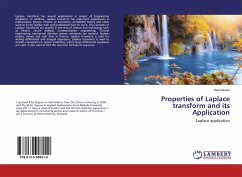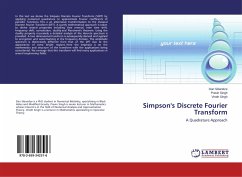
Simpson's Discrete Fourier Transform
A Quadrature Approach
Versandkostenfrei!
Versandfertig in 6-10 Tagen
27,99 €
inkl. MwSt.

PAYBACK Punkte
14 °P sammeln!
In this text we derive the Simpson Discrete Fourier Transform (SDFT) by applying numerical quadrature to approximate Fourier coefficents of periodic functions. This a an alternative transformation to the Classical Discrete Fourier Transform (DFT). A purely mathematical approach is taken to derive several properties including time reversal, even time shift, frequency shift, convolution, duality and Plancherel's theorem. Using the duality property recursively a detailed analysis of the discrete spectrum is provided. A two dimensional transform is subsequently derived and applied to encryption an...
In this text we derive the Simpson Discrete Fourier Transform (SDFT) by applying numerical quadrature to approximate Fourier coefficents of periodic functions. This a an alternative transformation to the Classical Discrete Fourier Transform (DFT). A purely mathematical approach is taken to derive several properties including time reversal, even time shift, frequency shift, convolution, duality and Plancherel's theorem. Using the duality property recursively a detailed analysis of the discrete spectrum is provided. A two dimensional transform is subsequently derived and applied to encryption and watermarking in the frequency domain. The amplitude spectrum is distinctively different from that of the DFT due to the appearance of extra bright regions. Here the emphasis is on the mathematics and structure of the transform with the applications being coincidental. We envisage that this transform will find many applications in several engineering fields.





